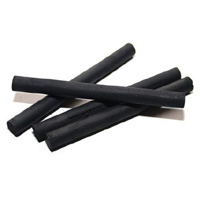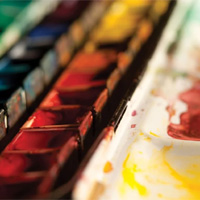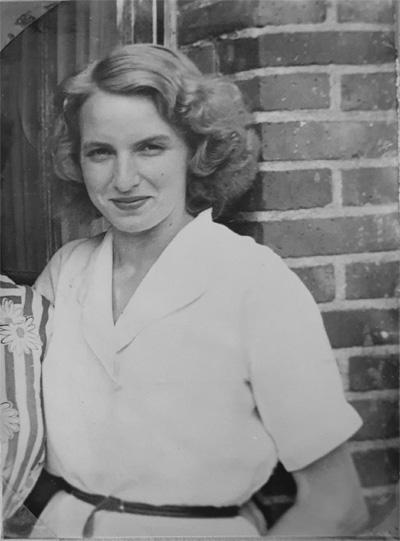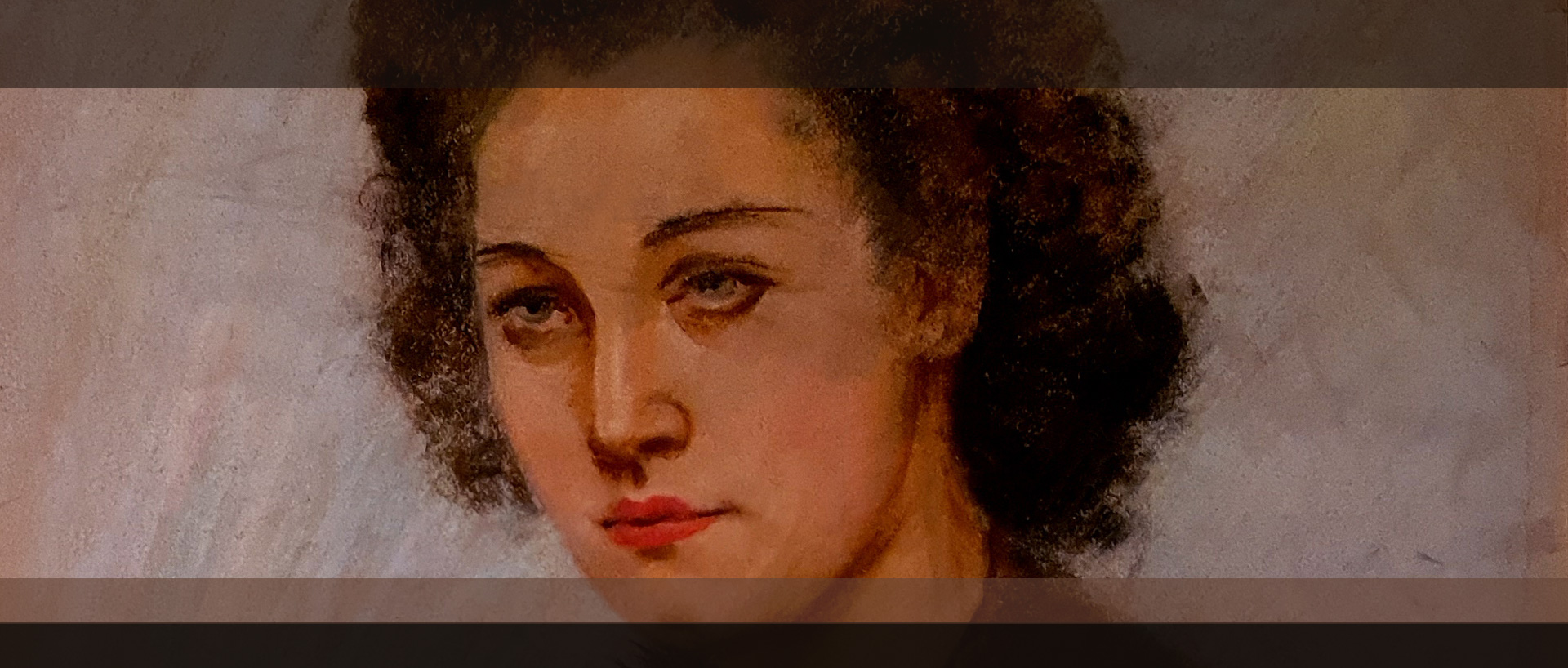
Liao Sin-Hio
(Liao Xinxue)
Liao’s youth 廖新学 in China
It is difficult to have a very precise vision of the youth of Liao Xinxue. Even with his French friends he remained very discreet about his life in China.
Birth
His date of birth is also rather unclear.
If we refer to the registers of enrolment at the Ecole des Beaux-Arts in Paris, he was born on 14 January 1910 in Fou-Ming. It seems that he was born around 1903, but in order to be allowed to enrol at the Ecole des Beaux-Arts, he would have been obliged to make himself younger. At that time it was a common practice for foreign students.
Fou-Ming would correspond to a mistranscription of Fumin 富民 which is a kind of Xian 县 “district”, under the jurisdiction of the city of Kunming, capital of Yunnan province.
Yunnanfu (Yunnan Fou) is the ancient name of Kunming also called “City of Eternal Spring” because of its very temperate climate.
In some catalogues of exhibitions in which Liao participated, Yunnanfu is specified as his birthplace.
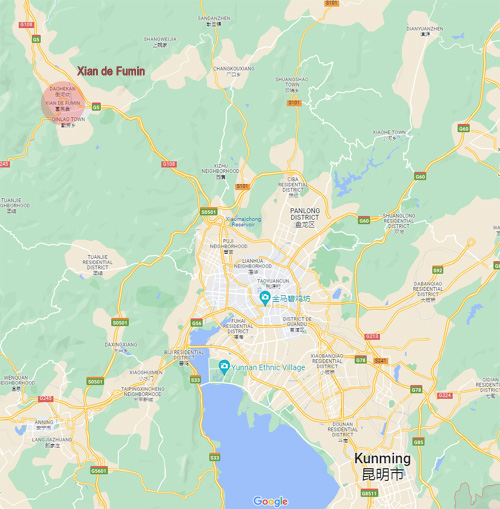

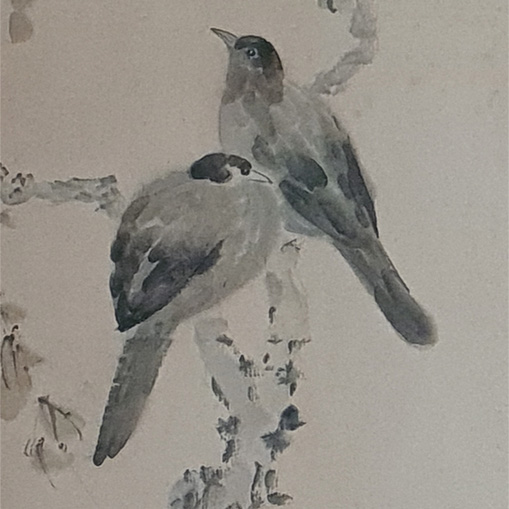
Training in China
Liao comes from a family of peasants with little money. At the age of eight he was orphaned. He leads a very hard life, working as a shepherd to survive.
By what fortunate chance did he find himself an apprentice in a museum in Kunming from 1919 onwards? He took painting classes and perfected all the traditional pictorial techniques of Chinese art. We can think that he also benefited from the teaching of the first generation of Chinese artists trained in Paris at the beginning of the 20th century and who returned to China (see next paragraph) because he also trained in oil painting.
After his studies, he opened a painting studio in Kunming and already acquired a certain notoriety in Yunnan.
Chinese artists and Paris
Opening up to the West
At the end of the 19th century, a wind of modernisation blew over China. The Chinese elite turned to foreign countries, mainly Japan and Europe.
From 1920 onwards, this phenomenon became more pronounced and many students went to Europe. Paris was the main attraction for art students, who received academic instruction at the Ecole des Beaux-Arts or trained at independent academies (Julian, Grande Chaumière, etc.).
Uprooted, not always mastering the French language, confronted with a new culture, a confusing mode of teaching, with limited resources for some, the experience could be trying and destabilising
These students often come together in associations.
Association of Chinese Artists in France
The Association of Chinese Artists in France, founded in 1933, was one of the most dynamic groups until the 1950s.
Liao was one of the Chinese students who came to Paris for training. He moved there in 1933. He joined the Association of Chinese Artists in France.
It was with this group that he spent a week in London in the spring of 1936 to visit the museums there.
He also took part in the important 1946 exhibition organised by this Association in the Grande Galerie des Beaux-Arts.
It is acknowledged that the artists of this association had a major influence on the development of Chinese art in the 20th century

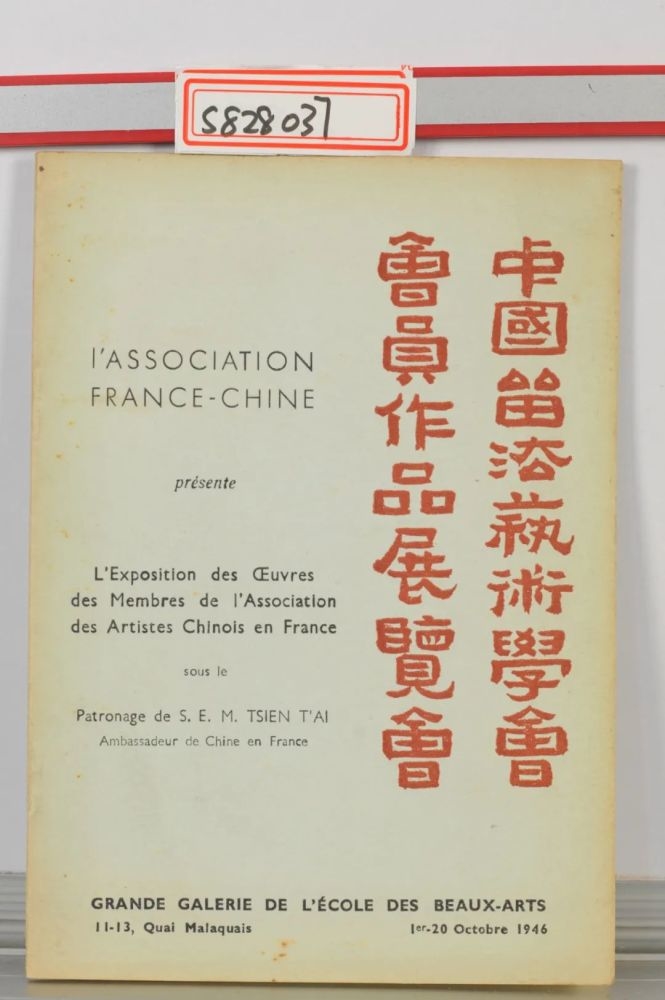
Liao’s studies in Paris
Thanks to the archives of the Ecole Nationale des Beaux-Arts (see the work of Professor P. Cinquini) Liao’s precise background can be reconstructed.
- From October 1933 to the end of 1935: he is enrolled in Jean Boucher‘s workshop (sculpture)
- Beginning of 1936: he passes the entrance exam, obtains a 2nd medal and is definitively admitted to this workshop, which he will attend until 1940.
- In 1936 he was also enrolled in the workshop of Raoul Lamourdedieu (1877 – 1953), a professor of sculpture.
- From 1941 to 1942: he is enrolled in the workshop of Marcel Gaumont (1880 – 1962), professor of sculpture from 1933 to 1950 and 1st Grand Prix de Rome in 1908.
Throughout his studies, Liao also trained in the galleries of the Beaux-Arts (other teaching venues).
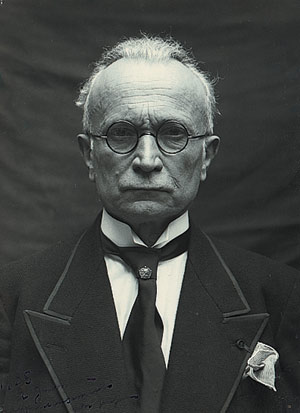
© Ville de Cesson-Sévigné – jean-boucher.org
Jean Boucher
Jean Boucher (1878 – 1939) was born in Cesson-Sévigné near Rennes in Brittany. From a modest background, he obtained a grant which enabled him to study at the Ecole des Beaux-Arts in Rennes, then to enter the Beaux-Arts in Paris. He is a renowned sculptor whose sculptures have won numerous awards. In response to official commissions, he produced several monumental works.
In 1919 he was appointed professor and head of the sculpture workshop at the Beaux-Arts de Paris. Although Jean Boucher died in June 1939, the name of his studio appears in the registers of the Ecole des Beaux-Arts until the end of 1942, which explains the presence of Liao in his studio during 1940.
He was a very popular and respected teacher among his students. Many of them will make a career and will be awarded the Grand Prix de Rome.
Among Jean Boucher’s students, we can mention, Liu Kaiqu 刘 开 渠 (1904 – 1993), Liao’s compatriot, member of the Association of Chinese Artists in France.
He was a student of Jean Boucher from 1928 to 1933, thus just before Liao. Liu Kaiqu is considered the founder of modern Chinese sculpture.
Studio on rue Daguerre in Paris
At the beginning of his stay in Paris, Liao lived at 28, avenue Laplace in Arcueil (Seine). In 1937, he opened his own sculpture studio at 11 rue Daguerre in Paris. In the foreground of the photo is the sculpture that marked the location of his studio on the ground floor. From 1941, he also had a flat in the building. R.H.L. met Liao in 1942 when she moved into 11 Daguerre Street.
At the beginning of his career, while training in sculpture at the Beaux-Arts, Liao continued to paint according to traditional Chinese techniques and themes because at that time there was a real market for Asian art in Paris.

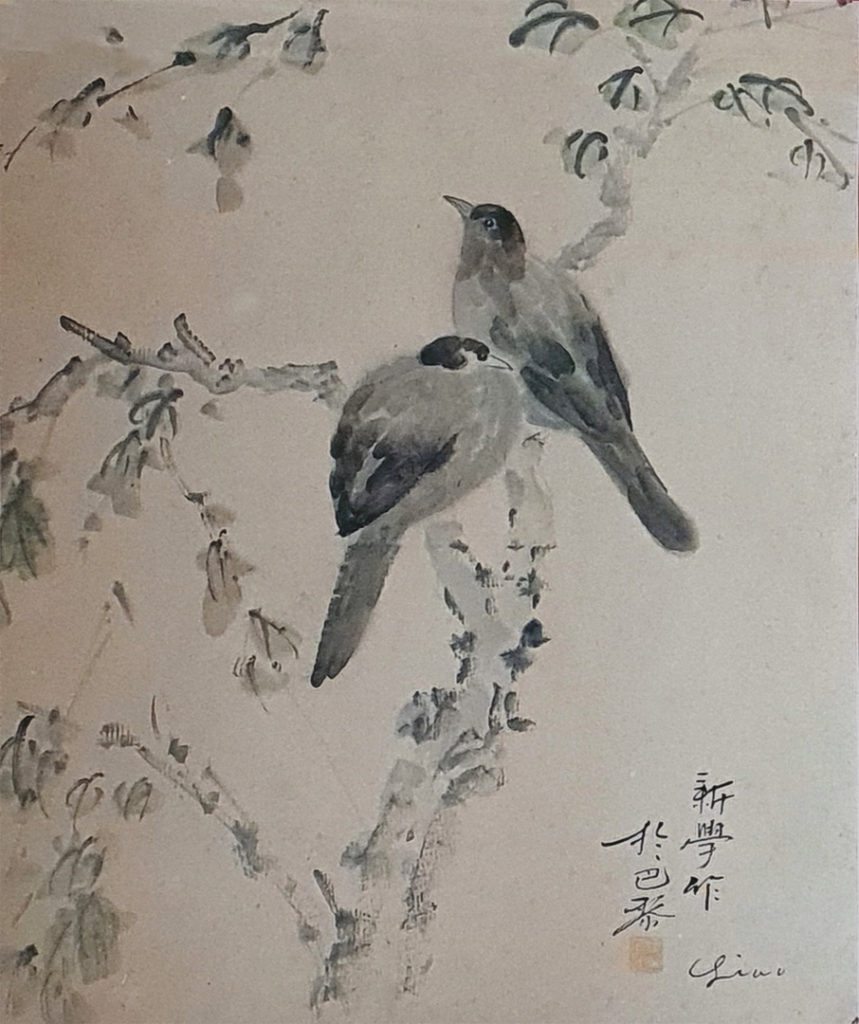
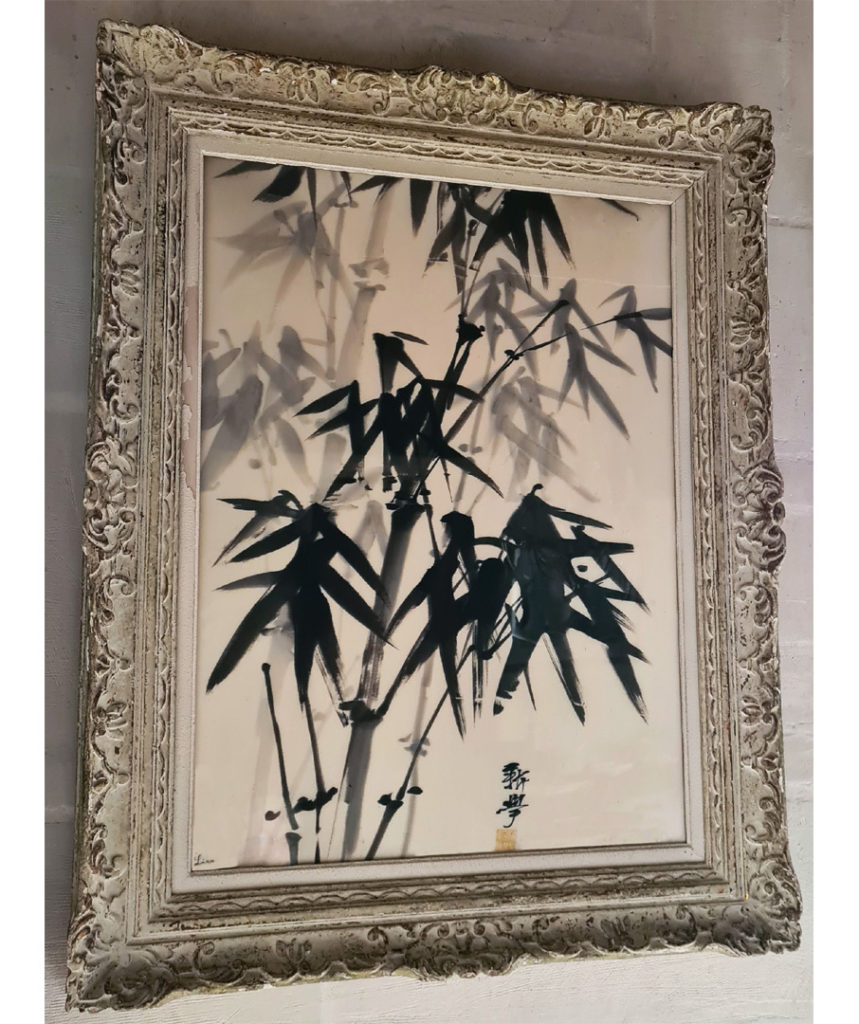
work exhibited at the 1947 Winter Salon

Source Gallica.bnf.fr – Bibliothèque Nationale de France
Exhibitions and Awards
During his stay in France (1933 – 1948), Liao invested all his energy and passion in his art. He took part in numerous Salons, exhibited in galleries and worked tirelessly in his studio. He also received commissions from the state (1945).
The catalogues of the salons of the time provide a concrete trace of his great activity:
He regularly participated in
- In Salon d’Automne
- In Salon d’Hiver
- In Salon des Artistes Français
- In Salon des indépendants whose motto is “no jury and no awards”.
Example of participation in the Salon des indépendants
Salon des indépendants
1936 – (47th exhibition)
Painting section
« Portrait de M. Gaseau »
« L’hiver »
1940 – ( 51th exhibition)
Painting section
« Aigle Blanc »
« Peinture Chinoise »
1941 – ( 52th exhibition)
Painting section
« Paysage chinois »
« Peinture sur soie »
1943 – ( 54th exhibition)
Painting section
« Aigle sur soie »
« Cygne sur soie »
1944 – ( 55th exhibition)
Painting section
« Femme nue »
« Buste »
Many of his works have won awards
Awards at Salon des Artistes Français
1941 – Bronze Medal
1942 – Silver Medal
1945 – “A Friend of the Artists” award (2000 fr)
1946 – Gold medal
1947 – Silver medal painting department
In France, Liao has mainly been rewarded for his sculptures, but he is also a very talented painter who left an important work.
In 2019 a major exhibition of the posthumous works of Liao Xinxue, Liu Huaxuan, Jiang Yibo, Huang Jiling and Zhang Weiyana was held in Kunming in Musée provincial du Yunnan.

Source Gallica.bnf.fr – Bibliothèque Nationale de France
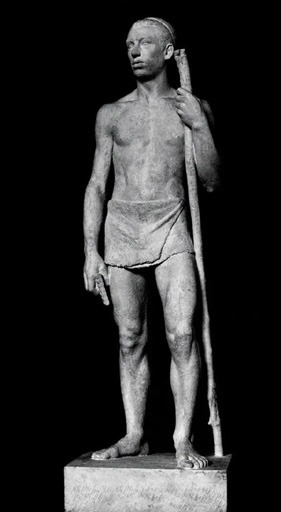
Musée provincial du Yunnan

Musée provincial du Yunnan
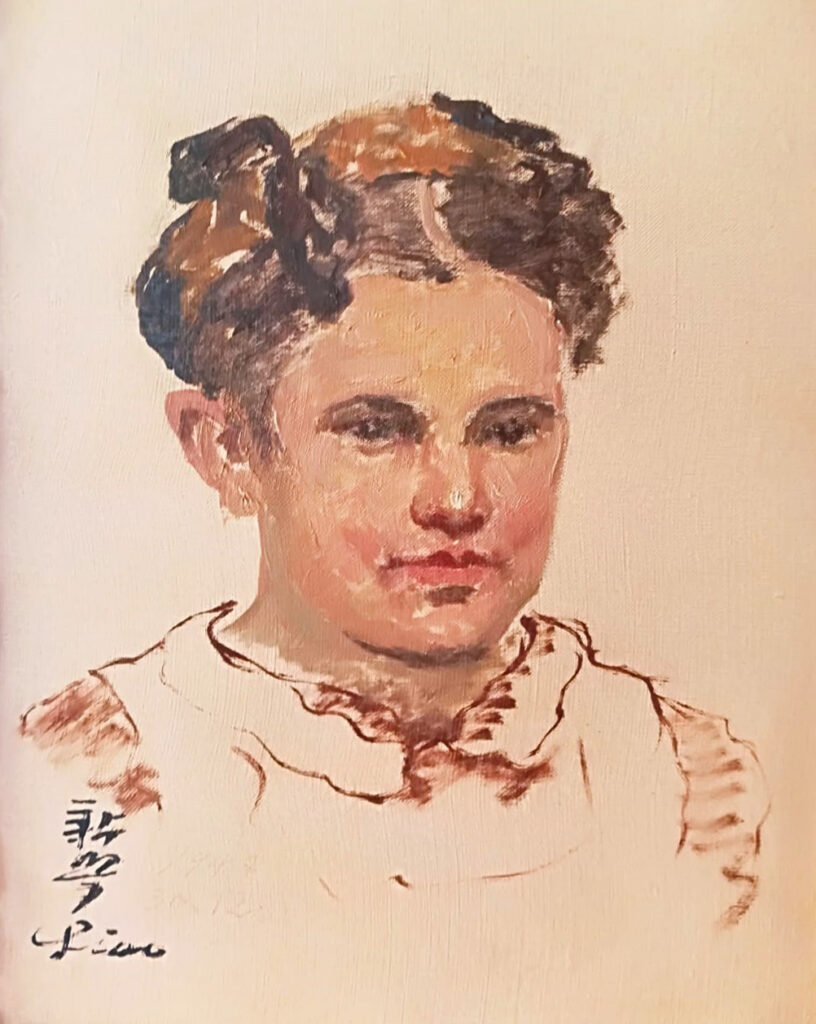
Marie-Paule’s portrait ©familleAime
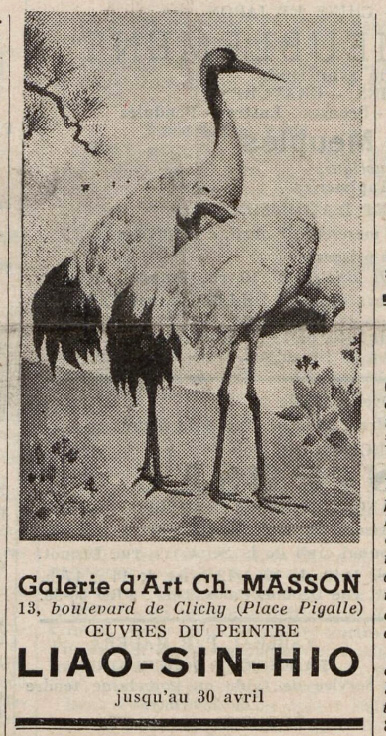
14/04/1943 – Archive INHA
Example of 2 particularly eventful years
1937
- In Salon de 1937 – 150th exhibition
from 1 May to 11 July
he exhibits
in painting section : « Portrait de Chinois »
in the sculpture section : « Buste » (plaster)
He became an Honorary Member of the Salon
- In the 1937 Paris International Exhibition
from 25 May to 25 November
he exhibits with his 2 teachers Jean Boucher et Raoul Lamourdedieu.
More than 40 nations participated in this world exhibition.
The sculptors belong to Group VI = Graphic and Plastic Arts and Class 28 = Sculpture
Group VI exhibits in a special pavilion at the corner of Quai d’Orsay and Avenue Rapp.
Liao exhibits « Buste de Bergère »
Jean Boucher exhibits : « Verdun » (plaster) for which he received a “Grand Prix”
Raoul Lamourdedieu exhibits : « Jeune fille au châle » (plaster)
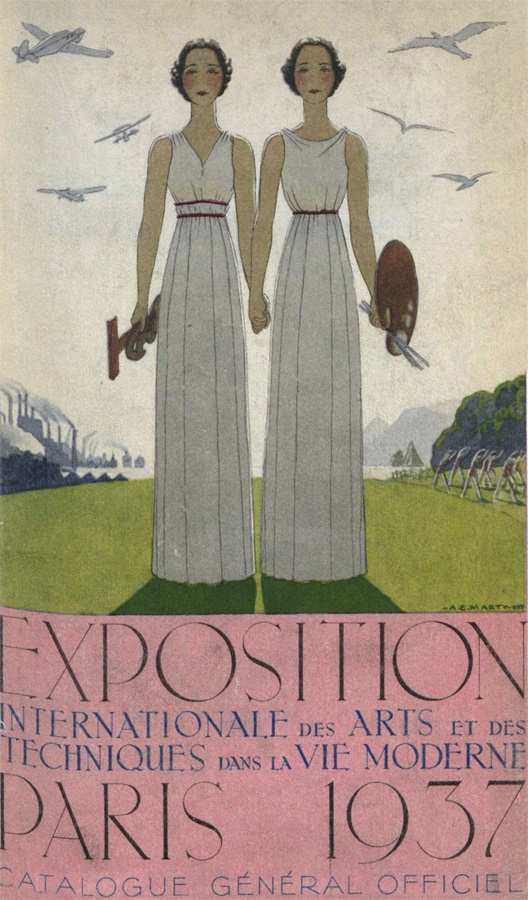
1946
His works are exhibited in various Parisian galleries such as:
Les Deux-Iles where he exhibited paintings on silk of landscapes and animals,
Le Petit Salon du Montparnasse
- In Salon de 1946 (159th): e won the gold medal for the bronze statue of an « Athlète portant un disque » (discobolus at rest).
- In October he participated in the first exhibition of the members of the Association of Chinese Artists in France in the Grande Galerie of the Ecole des Beaux-Arts.
The periodical “Gavroche” of October 10, 1946, mentions Liao Sin-Hio among the best painters of the exhibition.

- In Salon d’Automne de 1946,he exhibits 4 works: 2 bronzes (« Buste de petit garçon » and « buste ») and 2 «Drawings of horses »
- The Cernuschi Museum organises the exhibition« Peintures chinoises contemporaines »
Several members of the Association of Chinese Artists in France were included in this exhibition, including Liao.
About this exhibition, one can read in the newspaper Le Monde of June 27, 1946:
« A room is dedicated to artists living in Paris… among the sculptors Chow King Tong, Houa Tie You, Liao Sin Hio, Yen Te Fai, who participate in the Parisian artistic life where they bring their talent and sensitivity».
- He exhibits 6 paintings in Salon d’hiver (38th exhibition in Musée des Beaux-Arts) :
« Les tigres »
« Les paons »
3 « landscapes »
« Bambou »
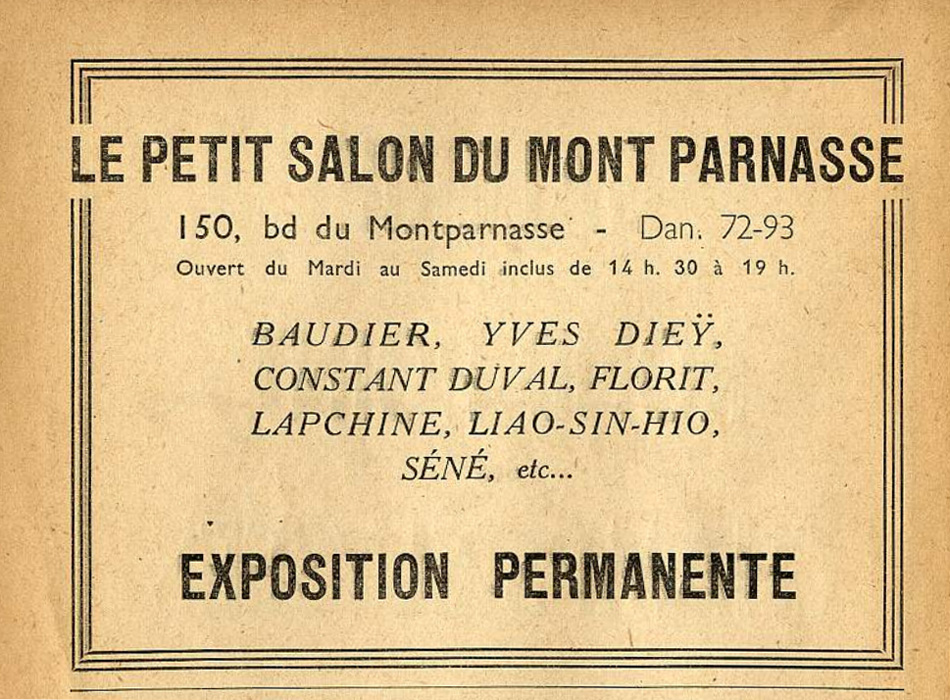
Source Gallica.bnf.fr – Bibliothèque Nationale de France

Source Gallica.bnf.fr – Bibliothèque Nationale de France
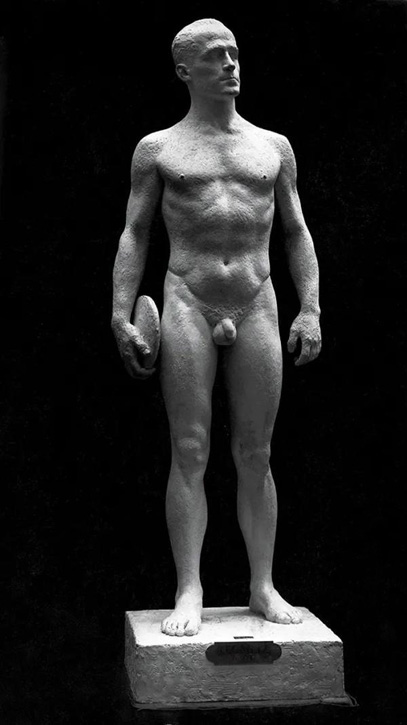
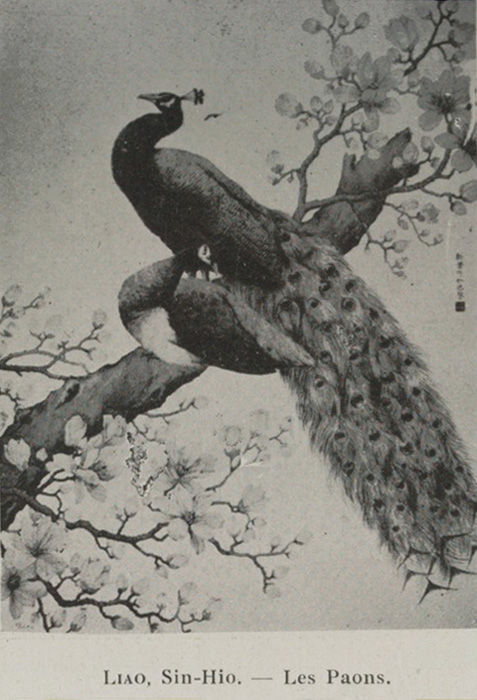
Source Gallica.bnf.fr – Bibliothèque Nationale de France
Relaxing moments
Liao Xinxue became friends with several residents of 11 Daguerre Street. He was part of the happy “gang” that met from time to time for parties and birthdays.
He had a kindly eye for the young couple that R.H.L. and her husband formed, and regularly organised an impromptu dinner or a trip to the cinema.
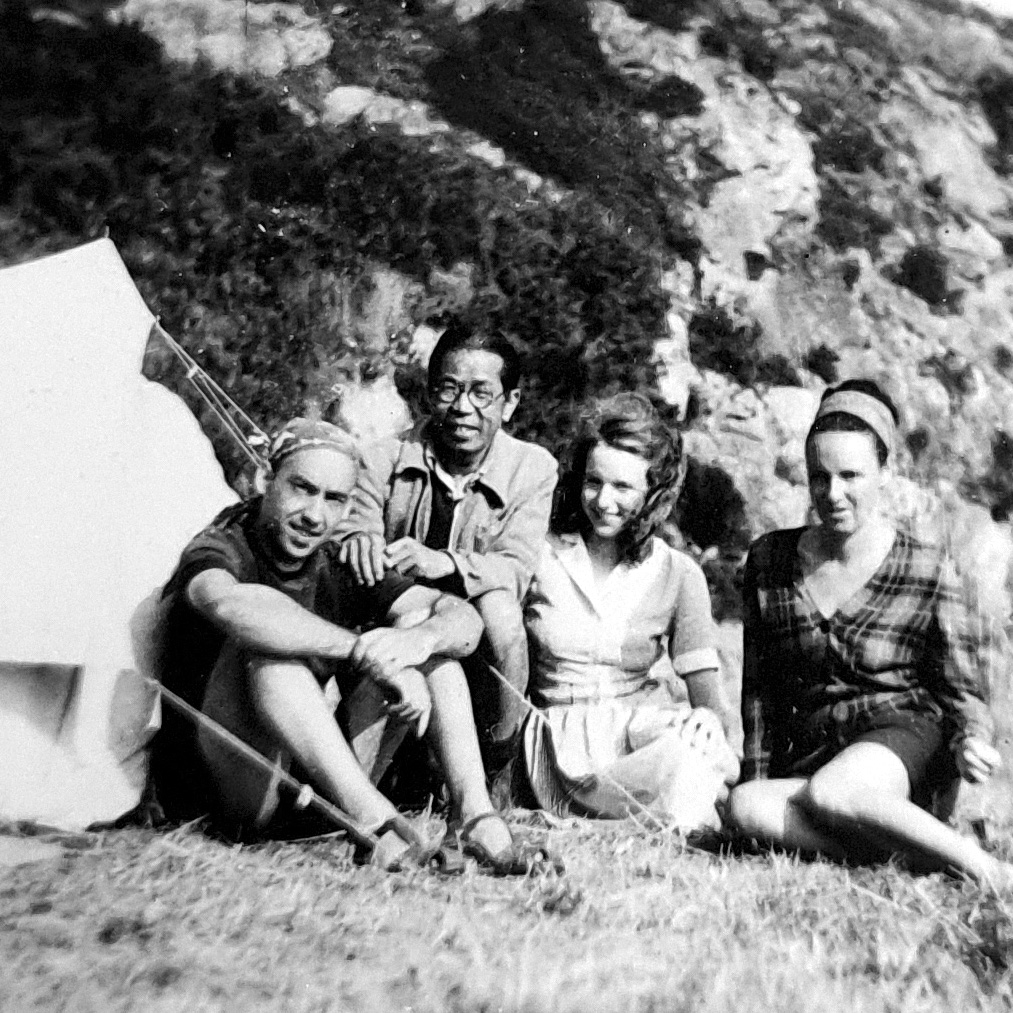
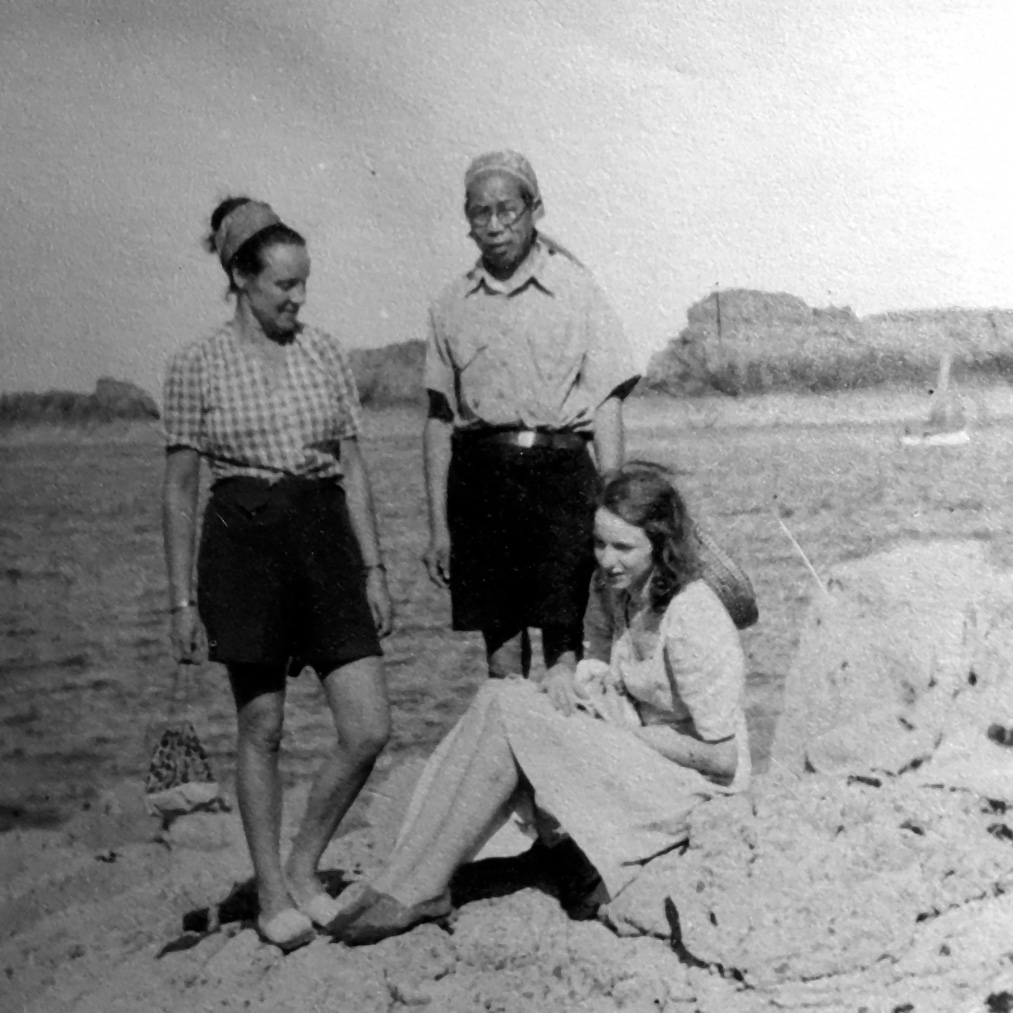
It was with the couple that he discovered Brittany and spent camping holidays in Saint-Briac in 1945.
He can be seen in the photos with R.H.L., her husband and the artist Madeleine Aimé who had a painting studio next to Liao’s.
He wanted to become the “uncle” of R.H.L.’s first daughter, but his departure for China in 1948, before the birth of her, cut short any relationship.
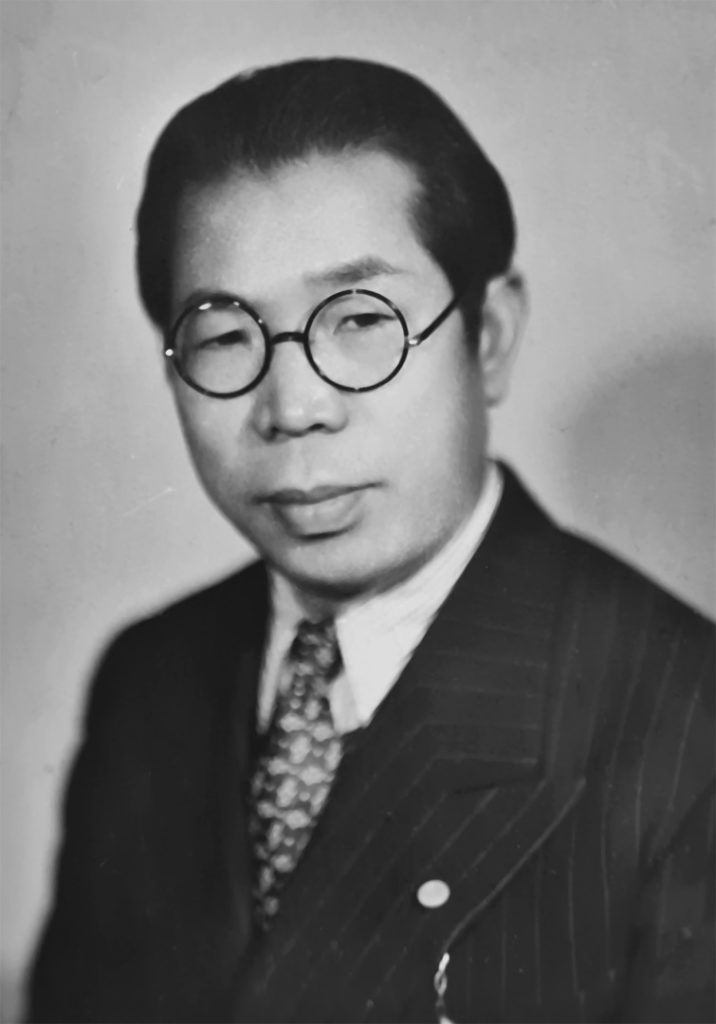
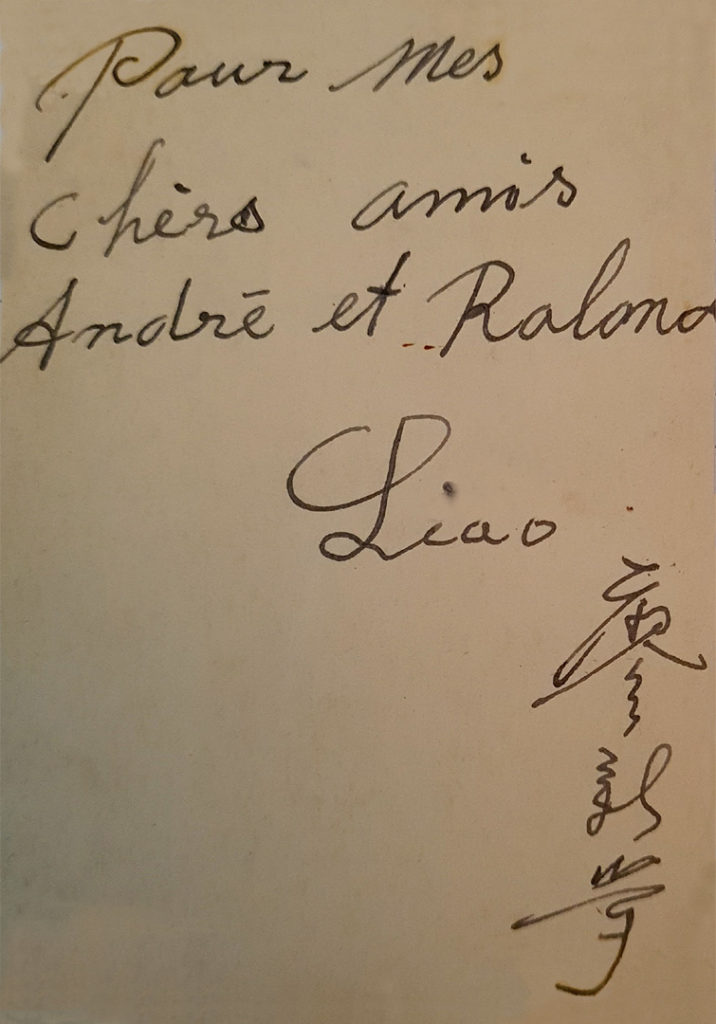
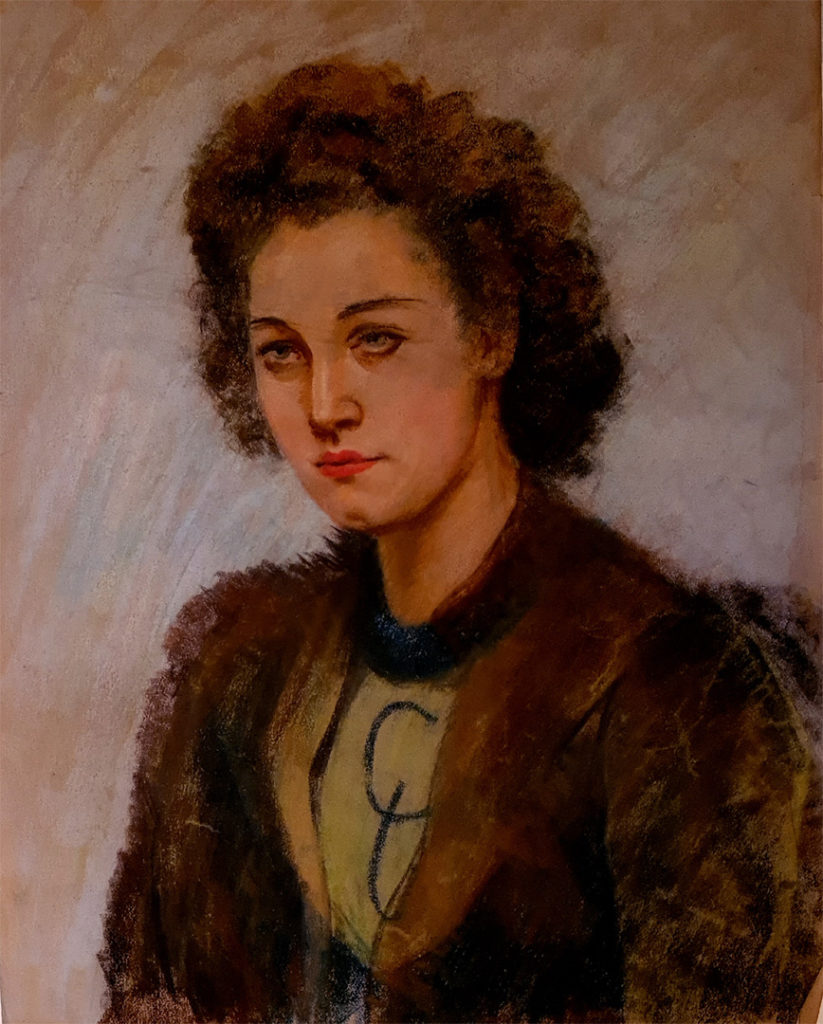
Return to China
Liao decided to return to China in the summer of 1948.
He entrusted the key to his sculpture studio to R.H.L..
For two years R.H.L. looked after his studio, but Liao did not return and his studio was closed down in 1950.
On the Chinese news portal Tencent there is an official press release about the 2019 exhibition in Kunming. It says that Liao continued a brilliant career in China.
He has been very involved in the artistic life of Yunnan province, holding increasingly important positions. He was also a member of the municipal team of the city of Kunming.
In 1951 he became a professor at the university.
He created a department of Art (now Yunnan Art College) and contributed to the development of China’s new art education system.
He died in 1958.
A statue was erected in his honour in Musée provincial du Yunnan
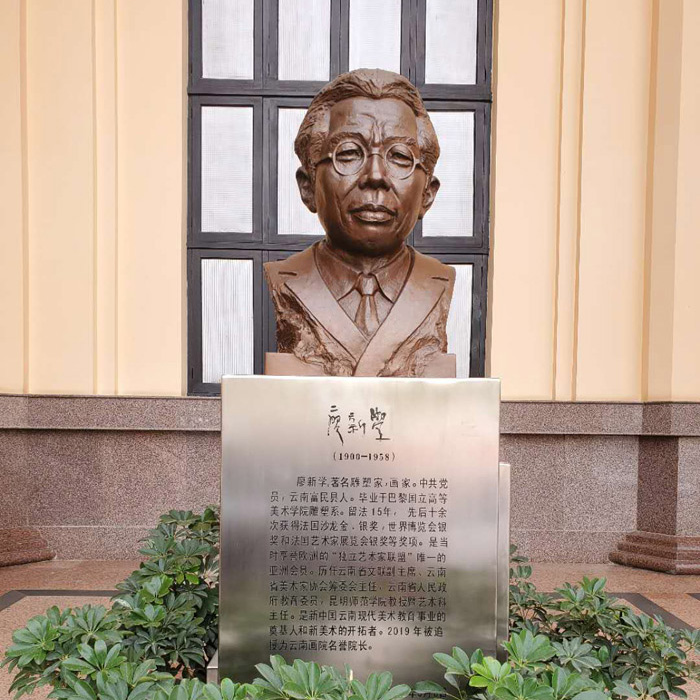
Références
Documents
Philippe Cinquini
Les artistes chinois à l’École des Beaux-Arts de Paris Vidéo
Les artistes chinois en France et l’Ecole nationale supérieure des beaux-arts de
Paris à l’époque de la Première République de Chine (1911-1949) : pratiques et enjeux de la formation
artistique académique (2017)
Site chinois d’information xw.qq.com
Michael Sullivan – Art and Artists of twentieth century china
Article du journal « Le Monde » 1946
Dossier de presse – Six siècles de peintures chinoises (2009) – Musée Cernuschi
Catalogues des Salons de la Société des Artistes Français – Gallica.bnf.fr – Bibliothèque Nationale de France
Catalogues du Salon d’hiver – Gallica.bnf.fr – Bibliothèque Nationale de France
Iconographie
https://www.citedelarchitecture.fr/fr/collection
What did the Chinese artists do in France? Fédération en ligne des cercles littéraires et artistiques chinois
Musée provincial du Yunnan – 云南省博物馆
Centre des médias Rong du comté de Nanchang
Site consacré à Jean Boucher – Ville de Cesson-Sévigné
Gallica.bnf.fr – Bibliothèque Nationale de France
Bibliothèque numérique de l’INHA – Gazette de Drouot – page 57
Collection privée R.H.L.

